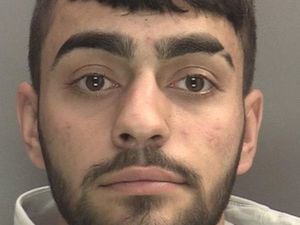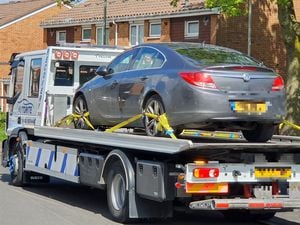D-Day special report: One mission - to liberate Europe
The invasion plan was simple. Allied troops would land on five beaches and grab a slice of Normandy 50 miles wide.
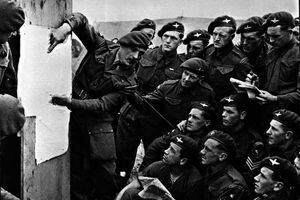
British and American airborne troops would strike a few miles inland to seal off the left and right flanks of the invasion area. From this bridgehead, the liberation of Europe would begin.
The first victory of D-Day fell to the men of the British 6th Airborne Division. Their job was to secure two crucial bridges and protect the eastern flank of the invasion area from German reinforcements.
Alec Harper, of Bloxwich, a staff-sergeant in the Paras, dropped into Normandy through 'a firework display' of tracer bullets and made his way to Pegasus Bridge. His war began at 10.15pm on June 5 as he and his comrades boarded the Stirling bombers which were to drop them over Normandy.
In the dim fuselage, he recalled, there was little for the paras to do but chat to the next man and contemplate the chances of survival: "Will I end up at the Hippodrome with a couple of pints of Butler's or Banks's . . . ?"
Over the French coast, tracer shells flashed past the Stirlings.
The red light came on. The paras prepared to go.
As the green light showed, they jumped into the blackness, falling towards occupied France.
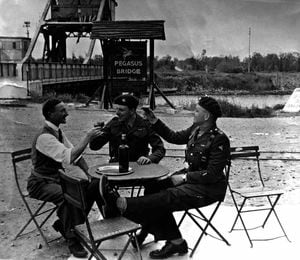
"Jerry was firing everything at hand," Mr Harper said. "Searchlights were sweeping the sky and tracer bullets seemed to be coming from everywhere. It was like a fireworks display but instead of looking at it, one was in the middle of it."
His abiding memory of D-Day was the unearthly wail of bagpipes echoing over the meadows when Lord Lovat's Commandos arrived as reinforcements, having fought their way inland from the invasion beaches.
Bold as brass, Piper Bill Millin, was making his way up the road at the head of the Commando Brigade. Lovat's men had stormed ashore on the beaches at dawn and fought their way inland, relieving small pockets of determined but lightly-armed paras and glider-borne troops who had been in action all night.
Out of a squally sky, six huge gliders carrying 180 men of the Oxford & Buckinghamshire Light Infantry slewed to a standstill within yards of the bridges.
Albert Gregory, of Stourbridge, a 29-year-old medic, was on the third glider to touch down at the Caen Canal bridge – later renamed Pegasus Bridge in honour of the Airborne Division badge – just after midnight on June 6.
The six-glider assault was led by Major John Howard. Pegasus Bridge was seized in less than 10 minutes in a flurry of grenades and machine-gun fire. The nearby Orne bridge fell with barely a shot being fired.
"I didn't know what to expect," Mr Gregory said.
"I'd never been in action before and every time I got in the glider, I was always sick because of the smell of glue and stale vomit. It was awful.
"But on D-Day itself I wasn't sick. Maybe that's because I was scared stiff.
"We had a bit of a bumpy landing. One wing broke off on a post and we span round like a top. I looked after one man in our glider who had a broken leg.
The next glider was smashed up and one of the spars had splintered and gone through a chap's back. He was dead."
As Mr Gregory and his comrades held Pegasus Bridge against German counter-attacks, Frank Swann, of Coseley, was one of hundreds of paras dropped all over Normandy and converging on the bridge as reinforcements.
At 11.30pm he and the rest of HQ company of 5 Parachute Brigade climbed aboard their aircraft. Like Albert Gregory, he enjoyed his first sickness-free flight: "As we got near the French coast, the order came to hook up. Then all hell broke loose. The enemy anti-aircraft fire was very good and the plane took evasive action.
"We all ended up on the floor. We just managed to get up when the hatch was opened and out we went. The sky was alight with flares and ack-ack fire."
Landing safely, he bumped into his brigade commander, Brigadier Nigel Poett and escorted him through the battle. "I had to laugh. He was 6ft 6ins with only his side arms and a map. I was 5ft 4ins carrying 100lbs of equipment. Talk about the long and the short. We were the first paratroops to reach Pegasus Bridge. What a night."
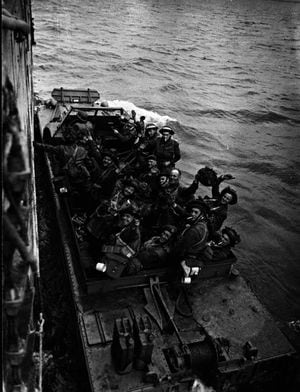
Advance parties of two para brigades landed at 20 minutes after midnight on June 6. Lieutenant Stan Jeavons, of Bilston, serving with the Parachute Regiment's 13th Battalion, was among them. He made an 'uneventful' landing beside a railway line and rallied his platoon near the village of Ranville. As they gathered in the darkness, an uncomfortable truth dawned.
He smiles as he remembers clearly his first words to his lads: "Look around. There's no other buggers here but us."
He said: "It was terribly exciting to realise, deep down, that we were on our bloody own. We were so isolated I seriously thought the invasion had been cancelled."
Years later a senior officer told him that he and his little band of brothers were dropped as a diversion, designed to draw German forces away from the main glider and parachute landing zones. If so, they succeeded.
From the moment they hit the ground the 13th Battalion were under fire.
Through the next day they fought off three ferocious German attacks on Ranville. And as the Germans threw guns and tanks against the invasion, the lightly armed Paras fought almost to exhaustion.
Later in the campaign Lt Jeavons faced a bizarre duel. From the enemy lines 200 yards away, a German officer rose, waving a rifle, bayonet glistening in the Normandy sun. As a band of British paras watched fascinated, the solitary German advanced. Someone pushed a Lee-Enfield rifle into the hands of the 26-year-old lieutenant. Stan climbed out of the trench and awaited the foe. But if the Nazi wanted some bizarre, noble duel, Lt Jeavons certainly did not.
"This bloke seemed to be thinking of a bayonet fight," he said. "It was the last thing I had in mind. When he got within a few yards, I shot him dead."
Lt Jeavons's luck ran out a few weeks after D-Day.
As enemy shells rained down, his batman, Private Prew, was having a quick smoke in the bottom of the trench.
"The shelling was terrible and then suddenly – slap! – one landed straight on the trench. I was buried. They managed to dig out my head but the shelling was so bad they had to leave me."
For the next few minutes, he endured the hellish experience of being buried neck-deep in Normandy, bullets cracking around his exposed head, unable to move a limb or even draw his revolver.
His batman was buried alive and suffocated. Losing blood from leg wounds, Lt Jeavons slipped into a coma and awoke days later in a military hospital in Britain. His army days were over.
Para John Lunt, of Aldridge, dropped at about 1am but landed five miles off target in the middle of an entire brigade's drop zone: "There were two thousand people coming down, containers and steel helmets going everywhere," he said.
"It was bloody dangerous. Confusion was the order of the night."



